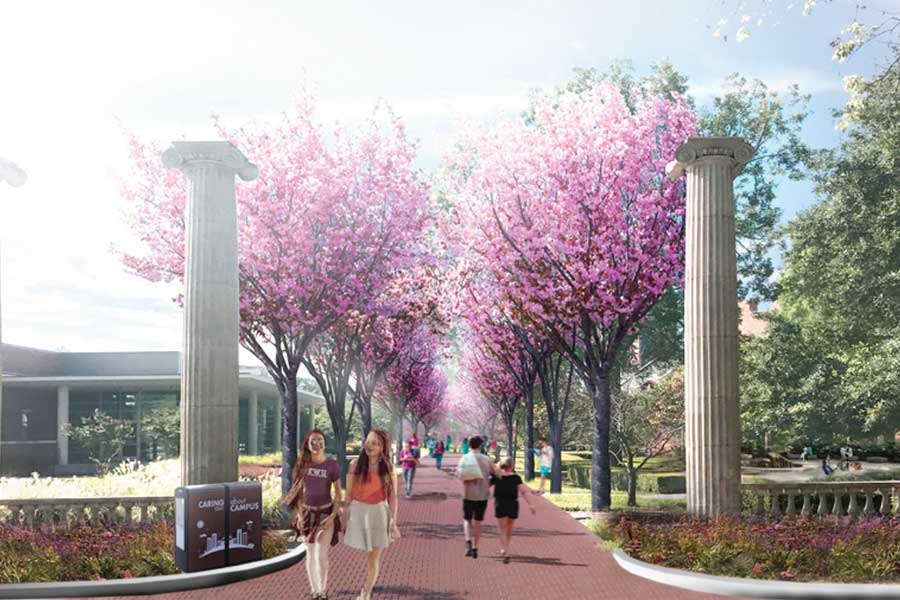Keep TWU Green
Tree Plantings
Building on the description of the Denton Campus Framework which emphasizes the plan to be an accommodation of the desired Denton campus growth, and an opportunity to meet Texas Woman’s cultural aspirations, the proposed plan is fundamentally driven by careful integration of the multitude of natural features that abound on the campus land.
A key feature of this is the preservation of several groups of trees as well as the goal of using native tree species in a very structured way to complement the distinct character of different places on campus. As indicated on the open space plan from the defining of the Denton campus entries and edge, to the most formal places of Bell Ave and the Mall, to the rich colorful features such as the Redbud Lane and the Creek, each is assigned a tree that is distinctive in color, shape and spread that will reinforce each different character. Vibrant colors and canopy shade that trees provide during the warmer months guide this toolkit strategy.
Celebrating the Redbud:

Natural elements on a site can generate community engagement through events and celebrations. An example is the various cherry blossom festivals that exist around the world, whether it be in Japan or Washington D.C.
A special event such as that provides an opportunity to celebrate nature with a Denton campus and community activity, perhaps promoting a celebratory walk or festival within the campus for when the redbud blooms.
Sticking to the Framework:
All of these tree species have distinct features (color, size, shade, etc) that best accentuate framework elements as identifiable places or connections. While the toolkit is a strategy for implementation, other native tree types that can be considered include:
- Lacey Oak
- Goldenraintree
- Crapemyrtle
Fast growing trees in Denton County (recommended by Texas A&M Tree Planting Guide).
Denton Campus Tree Map
Page last updated 2:14 PM, June 24, 2020
/prod01/twu-cdn-pxl/media/images/master-plan/Campus-Trees11.jpg)
/prod01/twu-cdn-pxl/media/images/master-plan/West-Campus-Trees-900px.jpg)
/prod01/twu-cdn-pxl/media/images/master-plan/East-Campus-Trees-900px.jpg)